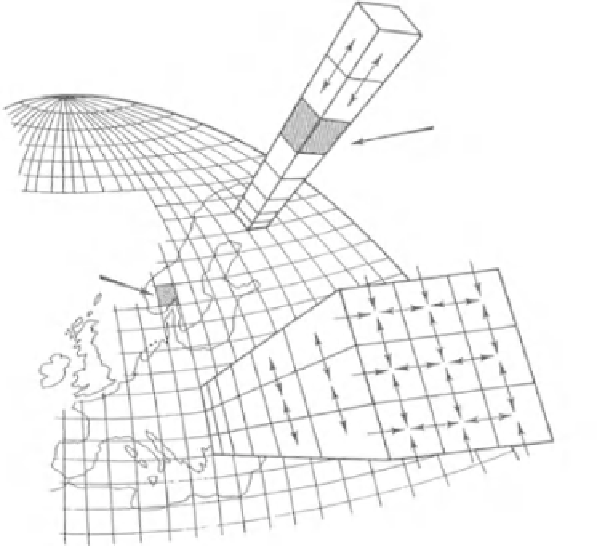Geoscience Reference
In-Depth Information
IN THE ATMOSPHERIC
COLUMN
Vertical exchange
between levels
Wind vectors
Humidity
Clouds
Temperature
Height
AT THE SURFACE
Ground temperature,
water and energy
fluxes
Horizontal exchange
between columns
Figure 8.1
Partition of the
atmosphere in GCMs in
Cartesian coordinates and the
exchanges and internal
processes represented in the
model. (From Henderson-
Sellers and McGuffie, 1987,
published with permission.)
How are General Circulation Models used?
General Circulation Models (GCMs) are currently used in three main ways, their
application having evolved historically as atmospheric scientists have come to
realize additional ways in which they can be used. GCMs were originally developed
in support of
Numerical Weather Prediction
(NWP), their purpose in this
application being to provide a physically realistic description of the circulation of
the atmosphere that is responsible for moving weather systems across the Earth's
surface. National and international weather forecasting centers continue develop-
ing and applying GCMs extensively for this important purpose. The process used
is essentially one of extrapolation. Weather forecast centers first use as much
observational data as they can routinely obtain to help define a measurement-
influenced description of the atmosphere, much of this data being obtained via the
World Weather Watch (WWW) system managed by the World Meteorological
Organization (WMO). This becomes the initial state specified in the GCM when
used for NWP, with updating of initial states and subsequent weather predictions
based on each initiation typically being made at six hourly intervals.
There are always observational errors in measured variables and these must be
recognized when the initial model state is defined, otherwise the GCM will
become unstable when run forward in time. To cope with this issue, the process
known as
four-dimensional data assimilation
(4DDA) is used. This involves





